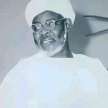The Development of Nonstop Crossings and Trans-Pacific Flight
Examining the Turning Points and Difficulties in Trans-Pacific Aviation History

Pilots have been enthralled by the challenge of crossing the huge Pacific Ocean for many years. It was once thought impossible to cross this vast body of water without stopping, but because to constant developments in aviation technology, what was once thought to be an insurmountable obstacle has progressively been surmounted. From its modest origins to the amazing nonstop crossings of today, the history of trans-Pacific flight is a monument to human ingenuity, tenacity, and the unwavering quest to push the envelope of what is possible in the air.
A nonstop trip across the Pacific appeared unthinkable at the beginning of the 20th century. It was an intimidating task because of the aircraft's restricted range and capabilities, the distance involved, and the lack of appropriate refueling stations. Transoceanic flights were an aspiration of pioneering aviators like Amelia Earhart and Charles Lindbergh, but such audacious projects were hampered by technological limitations at the time. Fuel shortages and dangerous weather frequently put an end to their attempts to traverse the huge Pacific.
Significant advancements in aviation technology did not start to open the door for trans-Pacific nonstop flights until the middle of the 20th century. With the development of more potent engines and improvements in aircraft design, the end of World War II signaled a sea change in aviation history. Originally designed for military use, the Boeing B-29 Superfortress demonstrated long-distance flight over the Pacific and provided evidence of the viability of nonstop travel.
With the advent of commercial jetliners in the 1950s, trans-Pacific aviation reached a turning point. The first commercial jet-powered aircraft, the Boeing 707, transformed air travel by increasing the viability and efficiency of long-haul trips. This technological advance paved the way for nonstop trans-Pacific flights by greatly cutting trip times and increasing aircraft range.
The real breakthrough in trans-Pacific aviation, however, occurred later in the 20th century, despite these advances. The aviation industry was revolutionized by the introduction of wide-body, fuel-efficient aircraft like the Boeing 747 and Airbus A340, as well as later models with extended-range capabilities like the Boeing 777 and Airbus A350. These planes were created especially to fly nonstop over large distances, including the difficult Pacific Ocean crossings.
The pursuit of trans-Pacific nonstop flights was not without difficulties. Among the many challenges faced by engineers and aviation specialists were increasing fuel efficiency, improving aerodynamics, and advancing navigation systems. The creation of ETOPS (Extended-range Twin-engine Operational Performance Standards) increased the twin-engine aircraft's dependability for lengthy overwater flights, guaranteeing trust and safety when flying great distances.
An important turning point in the history of aviation was reached with the first nonstop trans-Pacific flights. Airlines started running direct flights between major cities across the Pacific to meet the increasing demand for quick and convenient travel. Routes such as Los Angeles to Sydney, Tokyo to San Francisco, and several others came to symbolize the advancements in aviation technology and the globalization brought about by air travel.
Technological developments in aviation not only made trans-Pacific travel feasible again, but they also completely changed the traveler experience. Long-haul flights are now more pleasant and pleasurable for passengers because to in-flight entertainment systems, better onboard amenities, increased cabin pressurization, and improved comfort features.
Nonstop trans-Pacific flights are already commonplace, allowing for the remarkable ease of connecting continents and cultures. With continuous research into supersonic flight and developments in environmentally friendly aircraft technologies targeted at further increasing efficiency and lowering environmental impact, airlines are always pushing the envelope of what is feasible.
Though the era of nonstop trans-Pacific flights is firmly established, aviation innovation and advancement are still being sought after. The idea of hypersonic travel, which might cut travel times even more and completely alter how we view long-haul trips over the Pacific and beyond, is being investigated by researchers and engineers.
In summary, the development of trans-Pacific flying from an unlikely endeavor to a commonplace nonstop journey is evidence of both technology innovation and human resourcefulness. Through unrelenting innovation, what was once an impenetrable barrier has been overcome, changing how we cross the enormous Pacific Ocean and utilizing the wonders of contemporary aviation to bring people closer together globally.
About the Creator
Enjoyed the story? Support the Creator.
Subscribe for free to receive all their stories in your feed. You could also pledge your support or give them a one-off tip, letting them know you appreciate their work.






Comments
There are no comments for this story
Be the first to respond and start the conversation.